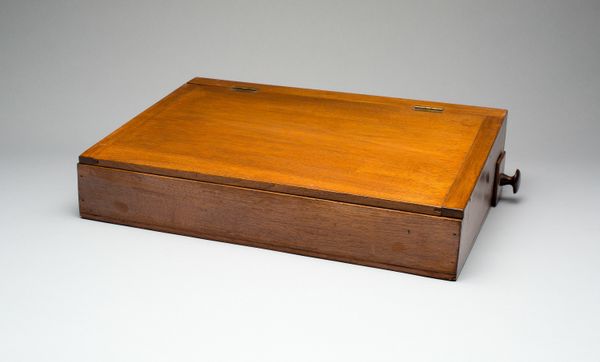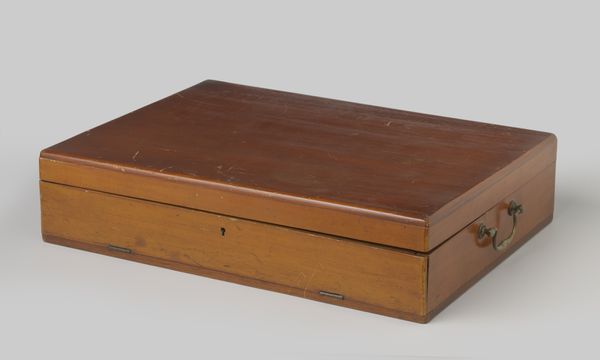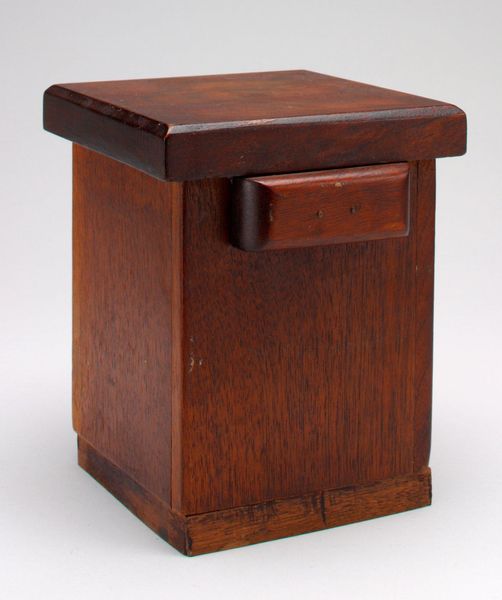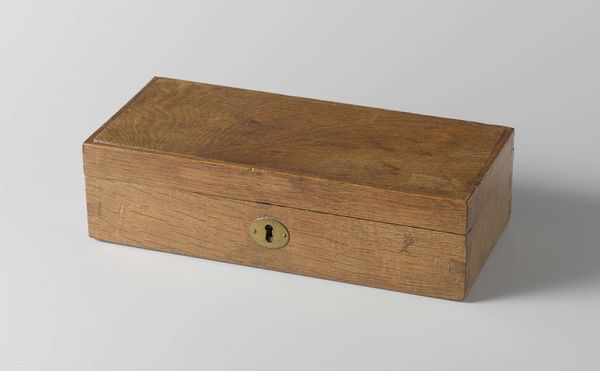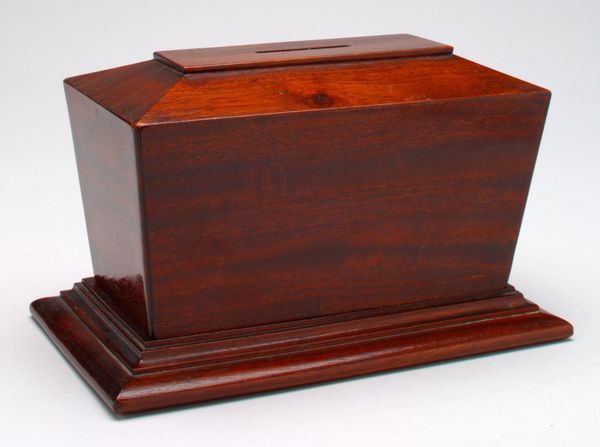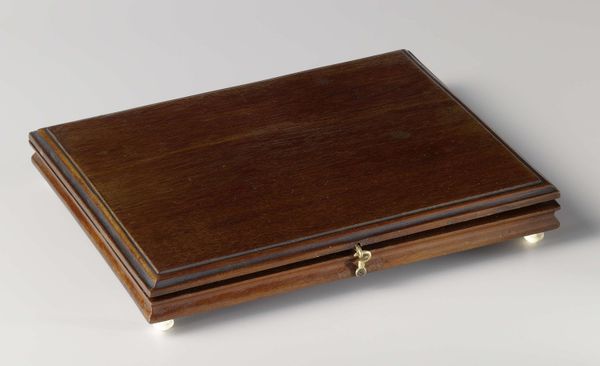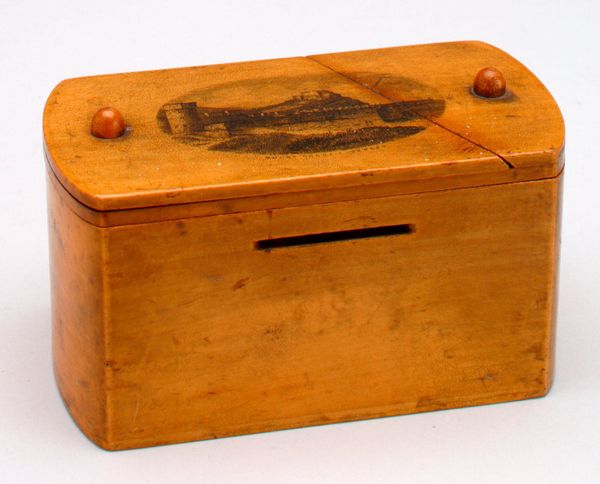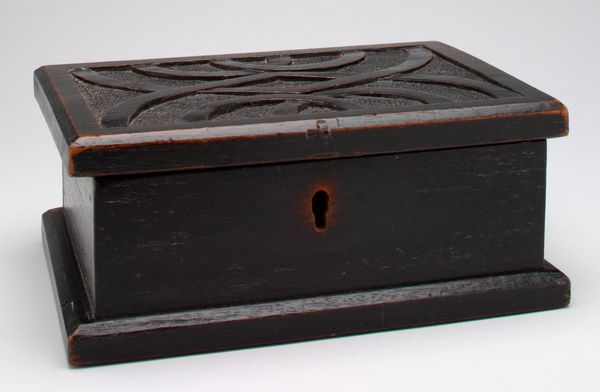
wood
#
wood
Dimensions: 3 3/4 x 7 13/16 x 5 1/4 in. (9.53 x 19.84 x 13.34 cm)
Copyright: Public Domain
Curator: As you can see before you, this object is known as a "Money box still bank." While we lack specifics about the artist, this piece dates to the 20th century and resides here at the Minneapolis Institute of Art. Editor: It has a modest elegance about it. The polished wood and geometric shapes suggest a sense of thriftiness mixed with aspiration. I mean, putting your pennies in something like this feels a lot more serious than just using any old jar. Curator: Indeed. Consider the function of a money box. It is more than just a container; it embodies cultural attitudes toward saving, investment, and the deferred gratification ingrained within capitalist structures. The use of wood itself evokes a sense of tradition and lasting value. Editor: The box's structure fascinates me – the darker panels bordered by lighter wood, emphasizing form and containment. It recalls early 20th-century design trends, blending functionality with visual appeal and hinting toward Art Deco principles despite its overall simplicity. Did it belong to a child, or perhaps an adult saving for something specific? The scratches and worn edges hint at many stories. Curator: The box transcends mere utility to become an intriguing cultural artifact. What beliefs, practices, or socio-economic conditions influenced the creation and use of this "still bank?" This simple box echoes how personal financial habits intertwine with broader cultural narratives of progress, security, and social standing. It serves as a potent reminder of financial values passed down over time. Editor: Exactly. Looking at this piece today, I am compelled to consider my relationship with money – how it has been shaped by history and visual cues like this handcrafted money box, echoing values across time and generation. Curator: An elegant observation indeed!
Comments
No comments
Be the first to comment and join the conversation on the ultimate creative platform.
